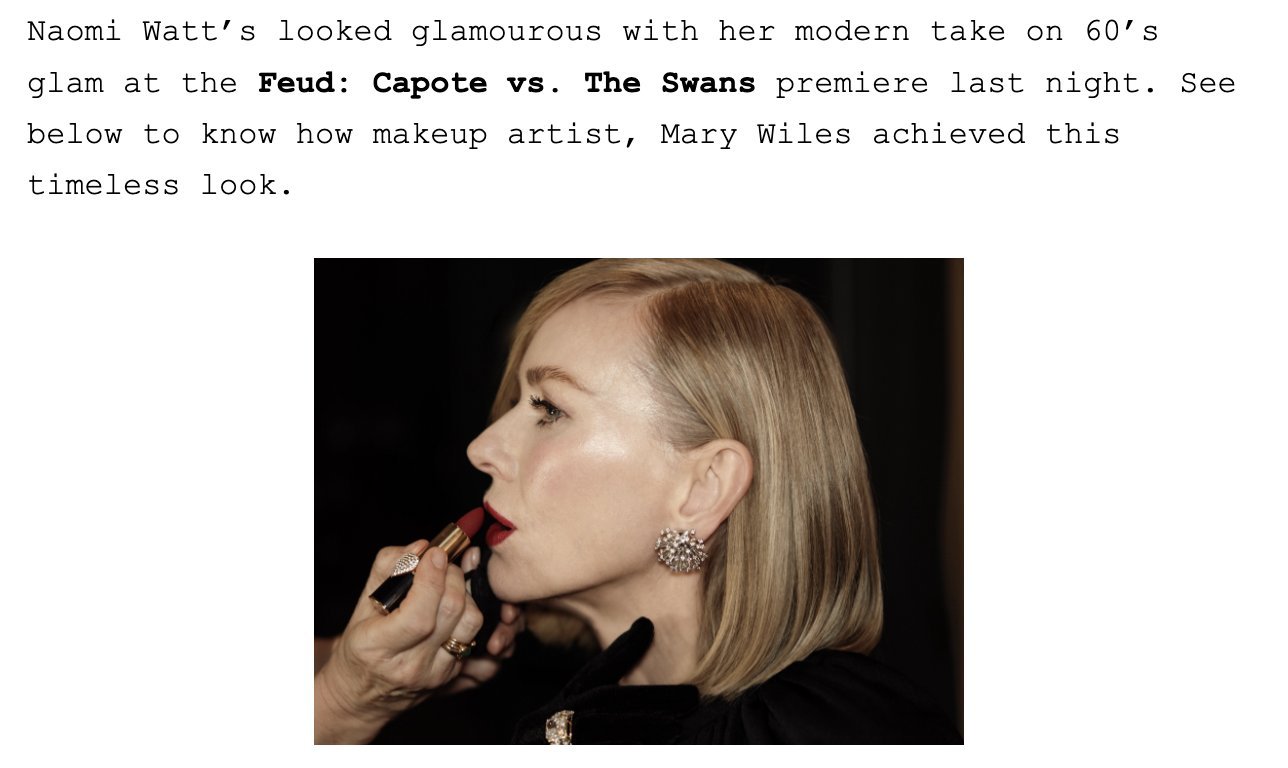Fun fact: The email address I use for my reporting work receives somewhere between 50-200+ pitches EVERY SINGLE DAY.
I’ve been contributing to online publications like Forbes, Vogue Business, The Quality Edit, and others since 2016, so I needed a separate inbox for the flood of PR folks who help their clients get coverage. That many emails every day was just too much!
But you know what? Despite those hardworking people’s best attempts at crafting a compelling pitch for me as a journalist, I almost never even bother to open most of the pitches that come my way.
The reason: So many of them miss the mark. Here’s an example of a pitch I was sent this week:
See the problem here?
There are misplaced apostrophes
There’s a comma splice
I don’t write about celebrity makeup looks (not relevant)
Over the years, I’ve had lots of folks ask me about how they can get their company, founder story, marketing strategy, etc., spotlighted in business publications (like the ones I write for.)
So today, I’m going to share a few tips and tricks in case this is a goal you have for 2024.
Tip #1: Be RELEVANT.
If you’re pitching a contributing freelance writer or full-time journalist, you need to do your homework first. Figure out what their “beat” is, the topics they typically cover, their go-to niche angles within that vertical, and study the types of stories they like to tell.
For my work with Forbes, for example, I often write about direct-to-consumer brands transitioning into brick-and-mortar stores, brands tackling sustainability issues in a meaningful way, compelling founder stories within the retail arena, and clever marketing tactics brands find success with.
So…as you can see, a pitch about a celebrity red-carpet makeup look is…not super relevant to the work I do. If the pitch had been about how a makeup brand works with celebrities and stylists to build brand awareness on social media, that’d be something I’d take note of. But… “Hey, look at this celebrity wearing makeup!” is not it.
Tip #2: Be CONCISE.
When you consider the volume and noise of the average writer’s inbox, you quickly begin to understand why brevity is essential. A good rule of thumb is to keep your pitch under 200 words, call out key points or statistics by putting them in bold font, and explain WHY your idea is worth delving into. Not why it’s a good idea for YOU, but for the WRITER.
Speak to the value this storyline would bring to the writer/publication’s audience, what they would learn by reading it, and how it relates to the industry or vertical as a whole.
Tip #3: Be AVAILABLE.
Timeliness is crucial for reporters, so if you’re sending out a pitch, make sure you and whomever else you’re offering up as a source is available to either hop on a call, answer questions over email, or turn around a quote request with speed. Most writers don’t have the bandwidth to play schedule tag, so be responsive if you get a reply from an interested journalist.
So many times, I’ve been sent a strong pitch, scheduled a phone call for the next day or two, and then had the person either cancel or ask to reschedule at the last minute. This is a waste of time for everyone involved, so consider offering asynchronous communication options if that’s more convenient and realistic.
Want more advice on this?
These three tips are my high-level advice for landing media coverage in 2024, but if you’d like a deeper dive, good news: You can get that right here.
In this video lesson, I cover:
1. How to come up with relevant story ideas for pitches
2. Nuts and bolts of crafting a strong pitch
3. Finding and connecting with the right people to pitch
4. How and when to follow up
5. General pitching best practices
6. Advice from established writers and editors at publications like Entrepreneur, The Atlantic, The New York Times, and more!)
7. Frequently asked questions (submitted by attendees during the live session)
Getting featured in a publication builds ethos with your audience, establishes a powerful form of social proof you can showcase on your website/marketing materials, and gives your parents something to brag about on Facebook.
If this is your goal, check out the in depth video lesson to eliminate much of the guesswork around this process.





